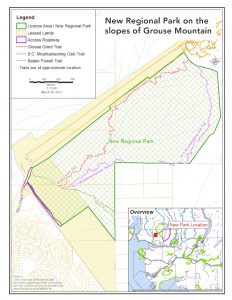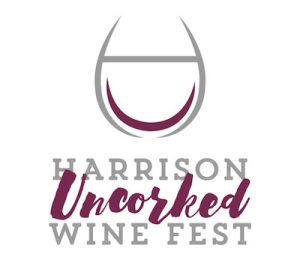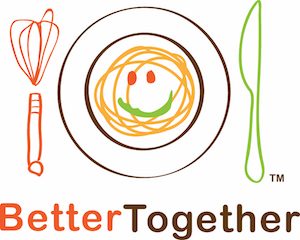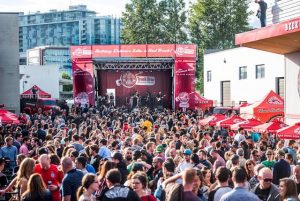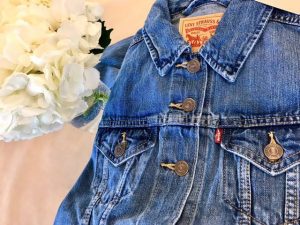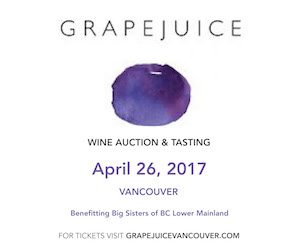BC’s largest Earth Day celebration, Party for the Planet, returns to the Surrey City Hall Plaza on April 22nd. This year’s festival headliner is JUNO nominated artist Shawn Hook. Surrey Party for the Planet Where: The Plaza at City Hall (13450 104th Avenue, Surrey) When: Saturday, April 22, 2017 from 10:00am to 7:00pm Admission This […]
Continue reading this post
Last week, Metro Vancouver announced the creation of a new 75-hectare (185-acre) regional park on the slopes of Grouse Mountain that includes the popular Grouse Grind, BC Mountaineering Club (BCMC) and a portion of the Baden-Powell trails within its boundary. A New Park in Metro Vancouver Effective May 1, 2017, the new park will become […]
Continue reading this post
The Uncorked Wine Festival is Harrison Hot Springs’ three-day destination food and wine event, showcasing the talents of some of BC’s most renowned wineries and local culinary personalities. Harrison Uncorked Wine Festival Combine crafted wines from local wine regions, and pair them with farm-fresh meats, cheeses, and produce right from Harrison’s doorstep. Add a little […]
Continue reading this post
Ballet BC concludes its dynamic 31st season at the Queen Elizabeth Theatre, May 11-13, 2017 with a thrilling triple bill of cutting edge and inspired choreography by two prominent Israeli choreographers and Ballet BC’s Artistic Director Emily Molnar. Ballet BC Dancers Rachel Prince & Brandon Alley. Photo: Michael Slobodian Ballet BC Program 3 Where: Queen […]
Continue reading this post
Better Together, an active online community forum, designed to celebrate family meals, cooking, and trying new recipes, has just launched the 8th annual Hands-on Cook-off contest across BC. This contest celebrates the importance of cooking and eating together. This year’s contest theme is celebrating and redefining “family”. Here in BC, family means something different to […]
Continue reading this post
Red Truck Beer is bringing back its Truck Stop Concert Series for a third year, with three summer outdoor concerts live from East Vancouver’s historic Brewery Creek neighbourhood. Red Truck Beer Summer Concert Series This year’s schedule will launch with a June 17th synth-pop show headlined by Australian legends Cut/Copy. Cut/Copy are a festival favourite […]
Continue reading this post
Hop & Shop at McArthurGlen this weekend! You’ll find Easter fun for everyone from fashionistas to chocolate lovers to car enthusiasts. First up is the Easter Trail Hunt for the little bunnies in your life, let them colour and hunt for Easter fun earning sweet treats from Lindt Chocolates along the way, while you enjoy […]
Continue reading this post
Unforgettable is a new thriller coming to the big screen, starring Katherine Heigl, Rosario Dawson and Geoff Stults. Tessa Connover (Katherine Heigl) is barely coping with the end of her marriage when her ex-husband, David (Geoff Stults), becomes happily engaged to Julia Banks (Rosario Dawson) – not only bringing Julia into the home they once […]
Continue reading this post
Red or white wine? Enjoy your favourite while supporting Big Sisters of BC Lower Mainland this month! GrapeJuice Wine Auction for Big Sisters Are you ready to wine down after a busy week? Join Big Sisters of BC Lower Mainland on April 26th as they celebrate the power of mentorship at their GrapeJuice event. This […]
Continue reading this post
Vancouver Opera presents three new opera productions, and bold programming, for the inaugural Vancouver Opera Festival April 28 to May 13, 2017. It will be a wide ranging celebration of the vocal arts, designed to appeal to diverse audiences, all set conveniently in the heart of downtown Vancouver. Vancouver Opera Festival Otello, Dead Man Walking, […]
Continue reading this post
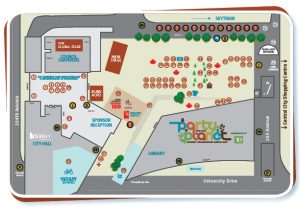
 BC Family Day Events 2026 Around Vancouver
BC Family Day Events 2026 Around Vancouver January 2026 Events in Vancouver This Month
January 2026 Events in Vancouver This Month Win Your Audi Raffle in Support of Sources BC
Win Your Audi Raffle in Support of Sources BC
